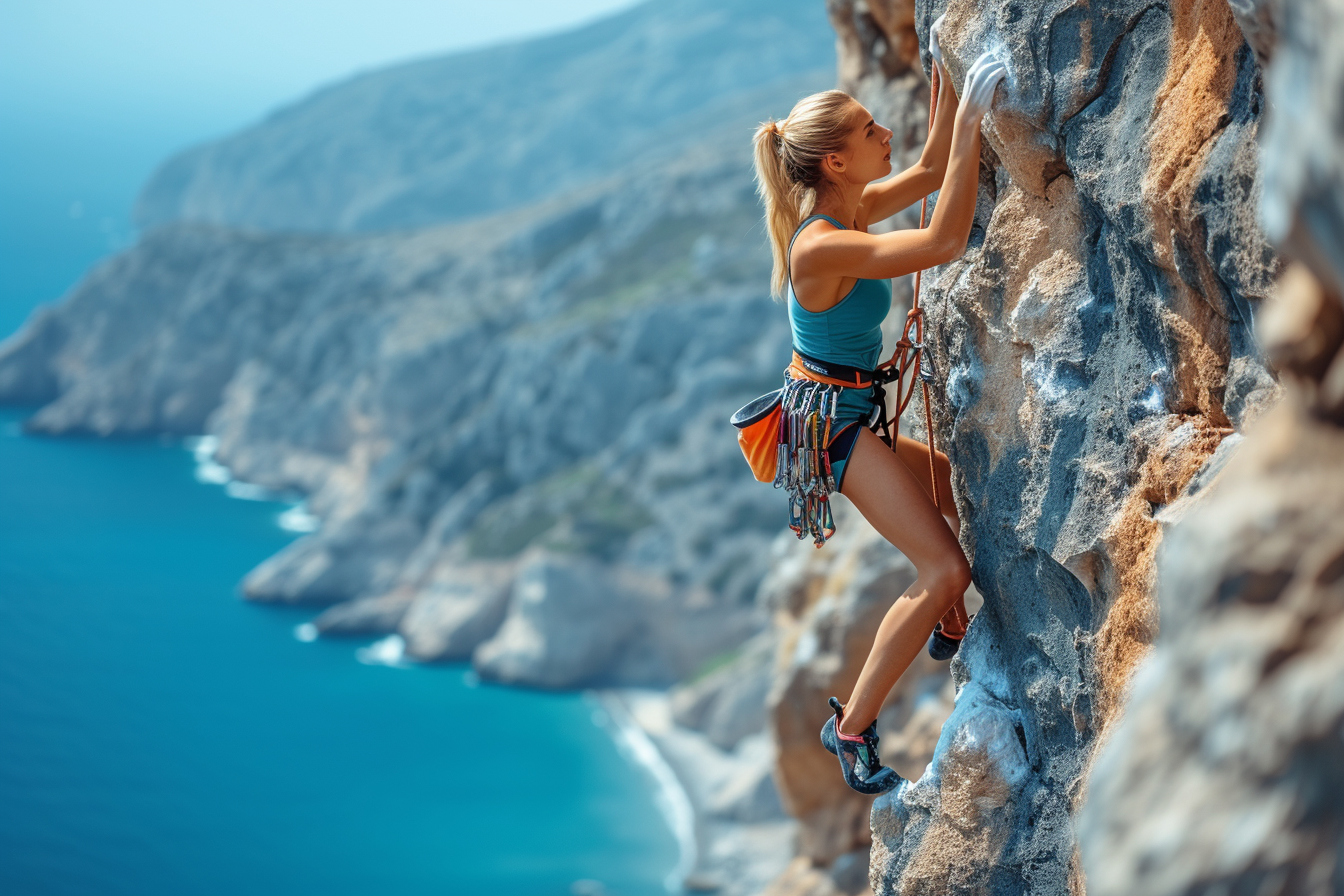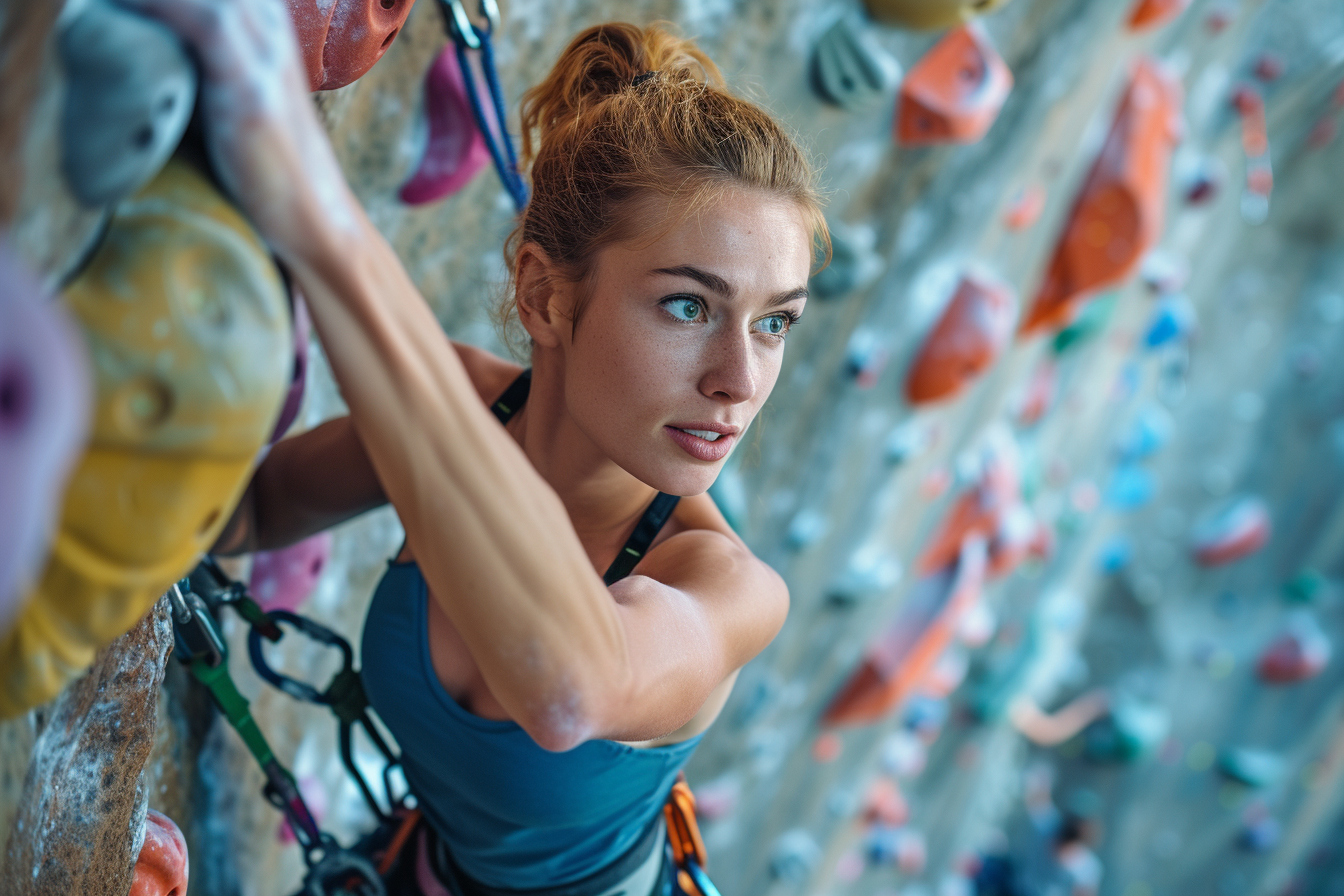Sport climbing is a thrilling and dynamic discipline that has captured the interest of enthusiasts around the globe. With the right preparation and understanding of the basics, beginners can safely embark on this vertical journey of physical and mental challenge. This comprehensive article delivers essential tips and insights to guide novices through their sport climbing adventure.
Understanding sport climbing
Sport climbing is a type of rock climbing that relies on permanent anchors fixed to the rock for protection. It’s a style that emphasizes physical strength, endurance, technique, precision, and safety. Routes can vary in difficulty, and they are graded according to a standardized system to give climbers an idea of the challenge they may face.
The basics of gear and equipment
Before venturing onto your first climb, familiarizing yourself with the necessary gear is a must. A basic sport climbing kit includes:
- Climbing shoes: Opt for a snug fit that offers sensitivity and precision on the rock.
- Harness: Choose one that sits comfortably on your waist and thighs.
- Helmet: Protection for your head should never be overlooked.
- Rope: Dynamic climbing ropes absorb the energy of falls and are designed specifically for this purpose.
- Quickdraws: These are used to clip the rope to bolted anchors on the wall.
- Belay device: This assists in controlling the rope during a climb and protects the climber from falls.
Expert advice on gear can be invaluable for beginners, so seeking recommendations at a local climbing shop or gym can be incredibly beneficial.
Essential skills to master

To embark on a sport climbing quest, there are several key skills that every beginner should master:
belaying:
Mastering the art of belaying is a critical skill for the safety of both climber and belayer. Knowing how to properly use a belay device to control the rope’s slack and catch a fall is paramount.
knots:
Being proficient in tying climbing knots, especially the figure-eight follow-through, which is typically used to tie into the harness, is essential.
Climbing technique:
Basic climbing techniques, such as proper foot placement and body positioning, conserve energy and improve efficiency on the wall.
communication:
Clear communication between the climber and belayer helps prevent accidents and missteps. Learn the standard climbing calls to ensure safety at all times.
A good training regimen
Physical preparation cannot be underestimated when it comes to sport climbing. Strength, flexibility, and stamina are all aspects that will significantly boost your performance. Incorporating the following into your training will be beneficial:
- Climbing-specific exercises: Activities like pull-ups, grip strengthening, and wall climbs build the muscles used during climbing.
- Cross-training: Engaging in other sports can improve your overall fitness and prevent injury.
- Rest and recovery: Allow your body time to recover to prevent overuse injuries and fatigue.
It’s advisable to take it slow and build your strength and skills over time rather than pushing too hard, too fast.
Selecting the right climbing location
Embarking on your first climbs should be about learning and enjoyment rather than tackling the toughest routes. Starting with indoor climbing gyms can offer a controlled environment where you can hone your skills. As you progress, choosing outdoor locations with beginner-friendly routes allows you to experience the sport in its natural setting.
Climbing ethics and environmental responsibility
Embracing a responsible approach toward climbing also entails respecting the environment and the climbing community. Practice “leave no trace” principles by packing out all trash, minimizing your impact on the natural flora and fauna, and respecting rules and regulations at climbing areas.
Mental preparation: overcoming fear
While physical preparedness is crucial, mental fortitude plays a significant role in sport climbing. Confronting and managing the fear of heights, falling, and failure is a journey every climber faces. Visualization techniques, breathing exercises, and progressive exposure to climbing situations can alleviate these fears and build confidence.
Joining a community
Sport climbing is not just about the individual; it’s a communal activity. Linking up with a local climbing community or joining a club can provide a support network, opportunities for mentorship, and camaraderie. Fellow climbers can offer advice, share experiences, and become trusted belay partners on your climbing journey.
Continuous learning and improvement
As you delve into the world of sport climbing, stay open to learning. Enrolling in climbing courses, attending workshops, and seeking feedback from more experienced climbers will aid in your continuous improvement. Sport climbing is a journey of perpetual growth and learning where there’s always a new technique or skill to master.
Embarking on the path of sport climbing as a beginner is a compelling and enriching experience that combines the beauty of nature with the triumph of personal achievement. By equipping yourself with the right knowledge, skills, and attitude, you carve out a foundation for a fulfilling and safe climbing journey. Remember, the key to becoming a proficient climber lies in dedication, practice, and a passion for the vertical world. Engage with this new challenge wholeheartedly and watch as the heights you can reach—both on the rock and within yourself—become limitless.
